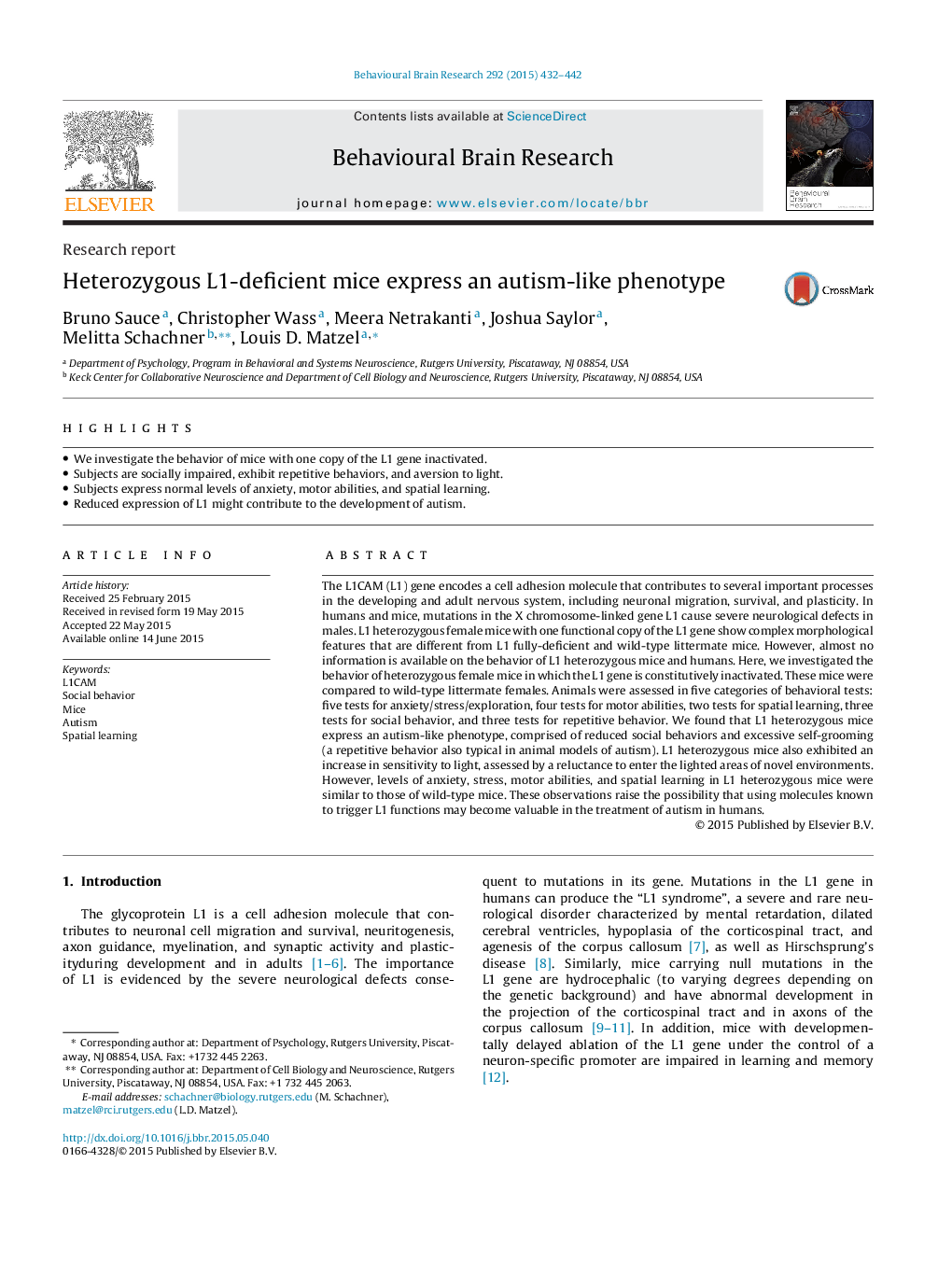| کد مقاله | کد نشریه | سال انتشار | مقاله انگلیسی | نسخه تمام متن |
|---|---|---|---|---|
| 6256540 | 1612940 | 2015 | 11 صفحه PDF | دانلود رایگان |

- We investigate the behavior of mice with one copy of the L1 gene inactivated.
- Subjects are socially impaired, exhibit repetitive behaviors, and aversion to light.
- Subjects express normal levels of anxiety, motor abilities, and spatial learning.
- Reduced expression of L1 might contribute to the development of autism.
The L1CAM (L1) gene encodes a cell adhesion molecule that contributes to several important processes in the developing and adult nervous system, including neuronal migration, survival, and plasticity. In humans and mice, mutations in the X chromosome-linked gene L1 cause severe neurological defects in males. L1 heterozygous female mice with one functional copy of the L1 gene show complex morphological features that are different from L1 fully-deficient and wild-type littermate mice. However, almost no information is available on the behavior of L1 heterozygous mice and humans. Here, we investigated the behavior of heterozygous female mice in which the L1 gene is constitutively inactivated. These mice were compared to wild-type littermate females. Animals were assessed in five categories of behavioral tests: five tests for anxiety/stress/exploration, four tests for motor abilities, two tests for spatial learning, three tests for social behavior, and three tests for repetitive behavior. We found that L1 heterozygous mice express an autism-like phenotype, comprised of reduced social behaviors and excessive self-grooming (a repetitive behavior also typical in animal models of autism). L1 heterozygous mice also exhibited an increase in sensitivity to light, assessed by a reluctance to enter the lighted areas of novel environments. However, levels of anxiety, stress, motor abilities, and spatial learning in L1 heterozygous mice were similar to those of wild-type mice. These observations raise the possibility that using molecules known to trigger L1 functions may become valuable in the treatment of autism in humans.
Journal: Behavioural Brain Research - Volume 292, 1 October 2015, Pages 432-442